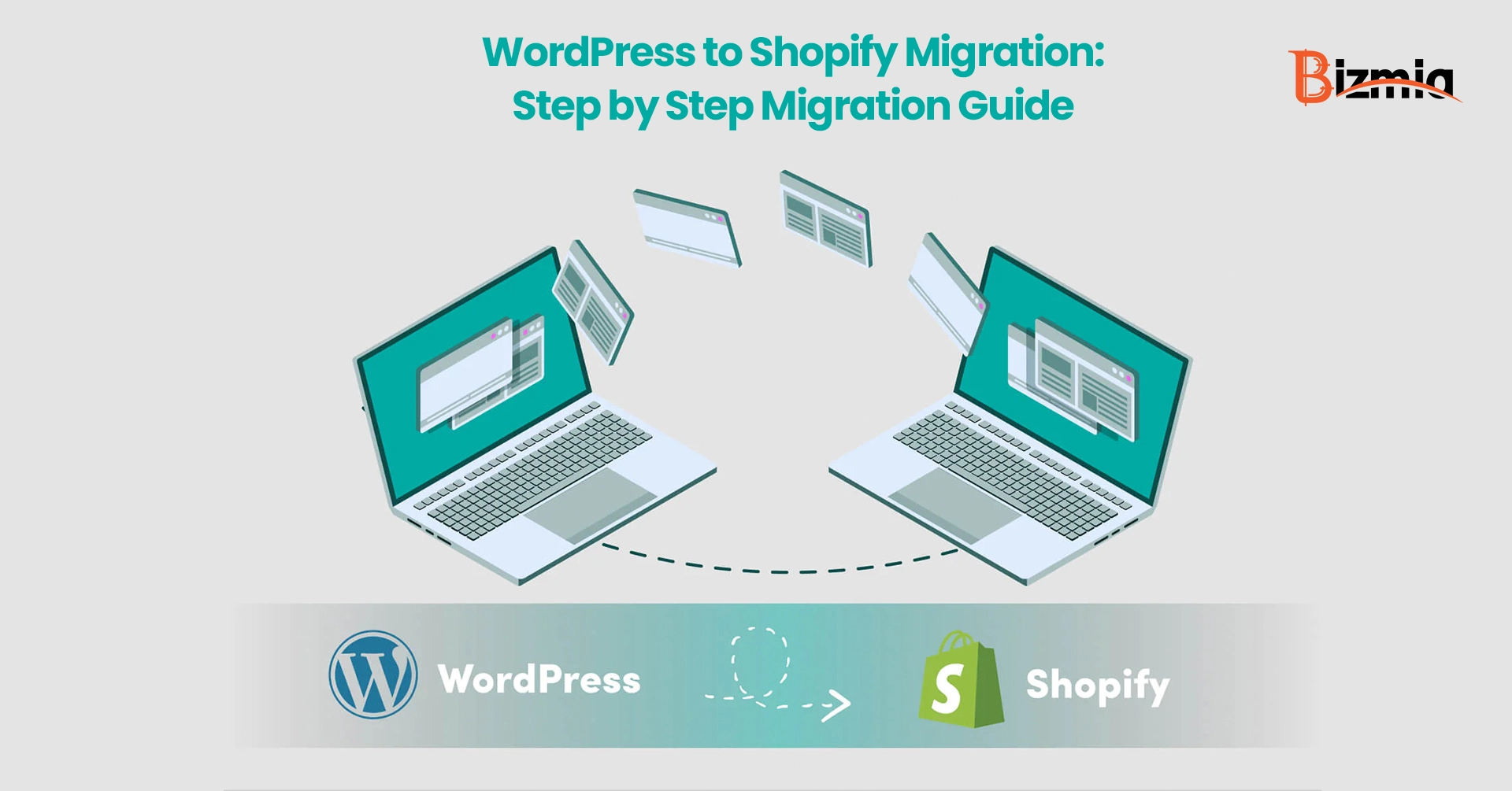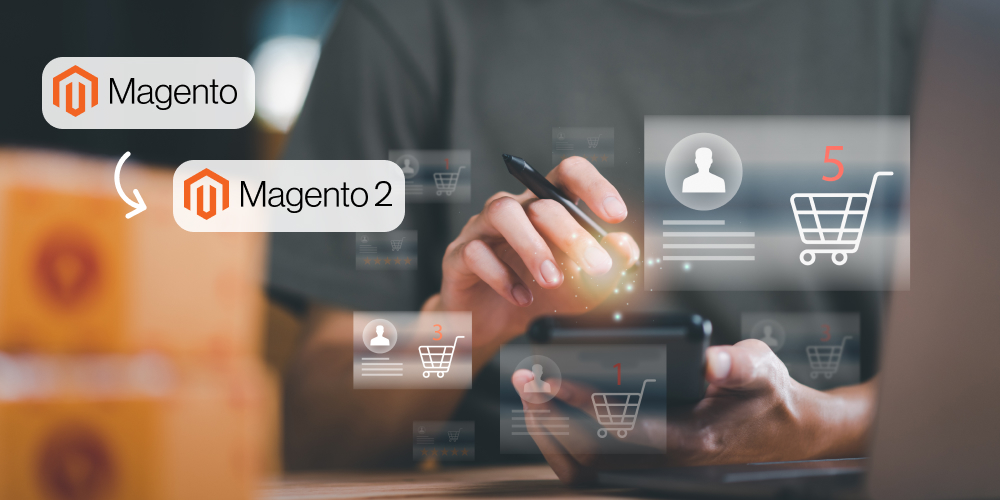The journey from WordPress to Shopify migration can be a transformative step for your business, marking the beginning of a new chapter in your online presence. This guide delves into transitioning from WordPress, a versatile content management system, to Shopify, a powerful e-commerce platform designed to elevate your online store’s functionality and user experience.
Understanding the nuances of WordPress to Shopify migration is crucial for a seamless transition, ensuring that your digital storefront retains its essence and harnesses the robust features Shopify offers. This step-by-step guide is tailored to navigate this pivotal journey, ensuring your move is as strategic and efficient as possible.
Table of Contents
Pre-Migration Planning
Evaluating Your Current WordPress Site
Before diving into the migration, it is crucial to thoroughly review your existing WordPress site. Analyze aspects like:
- Data Quality: Assess the quality and structure of your data, including product images and customer information.
- Content Inventory: Take stock of your blog posts, pages, and any unique features that must be carried over.
- Performance Analysis: Look at your current site’s performance metrics to set benchmarks for your new Shopify store.
Setting Migration Goals and Objectives
Clear goals lead to a successful migration. When planning, consider:
- Efficiency: Aim for a migration process that minimizes downtime and disruption.
- Data Integrity: Ensure all critical data, from products to customer orders, is migrated accurately.
- User Experience: Focus on enhancing the shopping experience in your new Shopify store.
Understanding the Differences Between WordPress and Shopify
Recognizing platform differences is key. Here’s what to keep in mind:
- Functionality: Shopify, as an e-commerce platform, offers different functionalities than a WordPress site.
- Design Adaptation: Understand how your WordPress theme will translate into a Shopify theme.
- Admin Interface: Familiarize yourself with the Shopify admin to manage your online store effectively post-migration.
Choosing the Right Migration Approach
Manual vs Automated Migration
Deciding between manual and automated migration involves understanding their benefits:
- Manual Approach: Offers more control over each step but requires more time and technical know-how.
- Automated Migration: Utilizes tools for efficient, error-free transfer. Ideal for those who value time-saving and simplicity.
For those considering an alternative platform, understanding why migrate to Magento 2 might guide your decisions.
Recommended Tools and Services
Selecting the right tools and services is crucial for a smooth migration:
- Shopify’s Import Button: Simplifies data transfer from WordPress to Shopify.
- Migration Services: Consider professional services for migrations involving large amounts of data and custom requirements.
Backing Up Your WordPress Site
Step-by-Step Guide to Backup
Ensuring a safe backup of your WordPress site is crucial:
- Identify Essential Data: Pinpoint what needs backing up – from blog posts to customer orders.
- Choose a Method: Decide whether to use a plugin or a manual backing method.
- Execute Backup: Perform the backup, ensuring all selected data is securely copied.
Tools and Plugins for Effective Backup
Selecting the right tools can streamline the backup process:
- WordPress Backup Plugins: Consider plugins like UpdraftPlus or VaultPress for reliable backups.
- External Storage Options: Use external storage solutions, such as cloud services or a physical hard drive, to store your backups securely.
Creating Your Shopify Account
Setting Up the Basics
To begin your journey with Shopify, start with the basics:
- Account Creation: Visit Shopify’s website and create an account. Fill in the required details, including your email address.
- Store Setup: Follow the prompts to set up your new Shopify store once logged in. This includes naming your store and providing essential business information.
- Shopify Admin Familiarization: Explore the Shopify admin area to understand where different features and settings are located.
Choosing the Right Shopify Plan for Your Needs
Selecting the appropriate Shopify plan is crucial:
- Assess Your Requirements: Consider the size of your online store and the features you need, like the number of products and the level of customer support.
- Compare Plans: Shopify offers various plans, including Basic, Shopify, and Advanced. Compare their features and pricing to find what best suits your business.
- Future Growth: Consider scalability. Choose a plan that fits your current needs and accommodates future growth.
Migrating Products and Content
How to Migrate Products, Categories, and Images
Migrating your products and content is a key step:
- Prepare Your Data: Ensure all product data in WordPress, including categories and images, is updated and accurate.
- Use Migration Tools: Utilize tools or services to help smoothly transfer your products, categories, and images to Shopify.
- Verify Post-Migration: After migration, check your Shopify store to ensure all products and images appear as intended.
Migrating Blog Posts and Pages
Transferring your blog content requires attention:
- Export Content: Use WordPress tools to export blog posts and pages.
- Import to Shopify: Utilize Shopify’s import feature or third-party tools to bring your content into your new Shopify store.
- Review and Update: Post-migration, review your blog posts and pages for any formatting adjustments or updates needed.
Maintaining SEO Rankings During Migration
Preserving your SEO rankings is critical:
- URL Structure: Try to maintain a similar URL structure in Shopify or make note of the changes for redirects.
- Update Meta Data: Ensure meta titles and descriptions are transferred correctly.
- Monitor Rankings: Post-migration, monitor your SEO rankings and adjust as needed.
Setting Up Redirects from WordPress to Shopify
Redirects are essential for a seamless transition:
- Identify Old URLs: List all URLs from your WordPress site that need redirection.
- Set Up Redirects in Shopify: Use Shopify’s redirect feature to point these URLs to the corresponding pages on your new store.
- Test Redirects: Ensure all redirects work correctly to avoid broken links and maintain user experience.
Transferring Customer and Order Data
Exporting Customer Information
Safely transferring customer data is vital for maintaining relationships:
- Prepare Your Data: Ensure all customer information in your WordPress site is current and organized.
- Use Export Tools: Employ tools to export customer data, often in CSV format, ensuring all relevant details like contact information and purchase history are included.
- Import to Shopify: Upload this data to your Shopify store, often via the Shopify admin or specialized import tools.
Migrating Historical Order Data
Historical order data provides valuable insights for future business decisions:
- Data Extraction: Extract order data from your WordPress site, paying attention to order dates, amounts, and customer details.
- Maintaining Integrity: Use reliable methods to transfer this data to Shopify, ensuring accuracy and completeness.
- Verification Post-Migration: After migrating, verify that all historical order data is correctly reflected in your Shopify store, maintaining business analysis and customer service continuity.
Setting Up Shopify Design and Functionality
Choosing and Customizing a Shopify Theme
Creating the right look for your store is crucial:
- Theme Selection: Explore Shopify’s theme store to find a theme that aligns with your brand’s aesthetic.
- Customization: Use Shopify’s customization tools to tailor the theme to your needs, from colors to layout.
- Preview and Adjust: Before finalizing, preview your theme with your products and content to ensure everything looks harmonious.
Installing Essential Shopify Apps
Enhance your store’s functionality with apps:
- Identify Needs: Determine additional features your store requires, such as improved SEO, marketing tools, or inventory management.
- App Selection: Browse Shopify’s app store for apps that meet these needs and have positive reviews.
- Installation and Configuration: Install and configure each app, ensuring they integrate seamlessly with your Shopify store and theme.
Customizing Checkout and Payment Options
Streamlining the purchase process is key to customer satisfaction:
- Payment Methods: Set up various payment options in Shopify, ensuring they cater to your customer base’s preferences.
- Checkout Customization: Customize the experience to make it user-friendly and consistent with your brand. Include elements like trust badges or custom checkout fields if necessary.
- Testing: Conduct thorough testing of the checkout process to ensure it is smooth, secure, and functioning correctly.
Testing Your Shopify Store
Conducting Thorough Testing for Functionality and Usability
Ensuring your store works perfectly is essential:
- Functionality Testing: Check every feature of your Shopify store, from navigation to search functionality, ensuring everything operates smoothly.
- Usability Testing: Engage in user testing to gauge your store’s ease of use and intuitiveness. This can include navigating the site, finding products, and completing a purchase.
- Feedback Incorporation: Collect feedback and make necessary adjustments to enhance the user experience.
Mobile Responsiveness and Cross-browser Compatibility Checks
Your store needs to be accessible on all devices and browsers:
- Mobile Testing: Verify that your Shopify store is fully responsive and provides a seamless shopping experience on mobile devices.
- Cross-browser Compatibility: Test your store across browsers (like Chrome, Firefox, Safari) to ensure consistent performance and appearance.
- Adjustments: Make any needed adjustments to optimize for mobile users and ensure cross-browser compatibility, maintaining a uniform visitor experience.
Launching Your Shopify Store
Final Checklist Before Going Live
Ensure everything is set for a successful launch:
- Review Content: Double-check all product listings, descriptions, and images for accuracy.
- Test Features: Confirm that all functionalities, like search and checkout, work smoothly.
- Verify Design: Make sure the Shopify theme and layout appear as intended across different devices.
Setting Up Redirects from WordPress to Shopify
Redirects are vital for a seamless transition:
- Map URLs: Identify all key URLs from your WordPress site that need redirecting.
- Implement Redirects: Use Shopify’s redirect functionality to guide visitors from old WordPress URLs to the corresponding pages on your new Shopify store.
- Test Redirects: Thoroughly test to ensure all redirects work correctly, preserving user experience and SEO rankings.
Post-Migration Steps
Monitoring Site Performance
Regularly check your site’s functionality:
- Performance Metrics: Track load times and user navigation patterns for insights.
- User Feedback: Pay attention to customer feedback for potential improvements.
- Technical Updates: Keep your Shopify store updated and resolve technical issues promptly.
Marketing Your New Shopify Store
Effective marketing strategies are crucial:
- Promotional Campaigns: Launch campaigns to announce your new Shopify store.
- Social Media Engagement: Utilize social media platforms to reach a wider audience.
- Email Marketing: Inform your existing customers about the migration and new features.
Utilizing Shopify Analytics for Growth
Analytics play a key role in growth:
- Track Key Metrics: Monitor sales, traffic, and customer behavior using Shopify Analytics.
- Strategic Decisions: Use data-driven insights to make informed business decisions.
- Continuous Improvement: Regularly assess your store’s performance and adapt your strategies for better results.
Troubleshooting Common Migration Issues
Addressing Common Technical Challenges
Navigating through migration issues efficiently:
- Data Discrepancies: Regularly check for any inconsistencies in migrated data, such as product details or customer orders.
- Theme Customization Issues: Address any glitches or display problems in your Shopify theme.
- Functionality Errors: Troubleshoot any issues with features like the shopping cart or checkout process.
Where to Find Help and Support
Know where to turn for assistance:
- Shopify Support: Utilize Shopify’s extensive support system for technical help.
- Community Forums: Use Shopify’s community forums for advice and shared experiences.
- Professional Services: Consider seeking help from professional Shopify experts for complex issues.
Conclusion
In conclusion, transitioning from WordPress to Shopify is a multifaceted process, encompassing everything from pre-migration planning and choosing the right migration agency to launching and optimizing your Shopify store. If this journey seems daunting, Bizmia is here to help. Offering a range of services tailored to each stage of the migration process, Bizmia ensures a smooth transition for your online store.
Whether evaluating your current WordPress site, assisting with product and content migration, or setting up your Shopify store’s design and functionality, Bizmia has the expertise to guide you through every step. Contact us to embark on a seamless migration journey to Shopify, backed by professional support and comprehensive solutions.
Frequently Asked Questions
What are the key factors to consider during pre-migration planning from WordPress to Shopify?
Evaluate your WordPress site’s content and performance. Set clear migration goals and understand the functional differences between WordPress and Shopify.
How do I choose between manual and automated migration for my online store?
Manual migration offers control but is time-intensive. Automated migration, using recommended tools and services, is efficient and less prone to errors.
What steps should I follow to back up my WordPress site before migration?
Use a step-by-step approach: identify critical data, choose a reliable backup tool or plugin, and store the backup securely.
How do I effectively migrate my products and content to Shopify?
Migrate products, categories, and images using Shopify’s import tools. Transfer blog posts, maintain SEO rankings, and set up URL redirects.
What should I focus on after migrating to Shopify for optimal performance?
Post-migration, monitor site performance, market your Shopify store and utilize analytics for growth and continuous improvement strategies.












